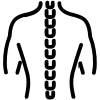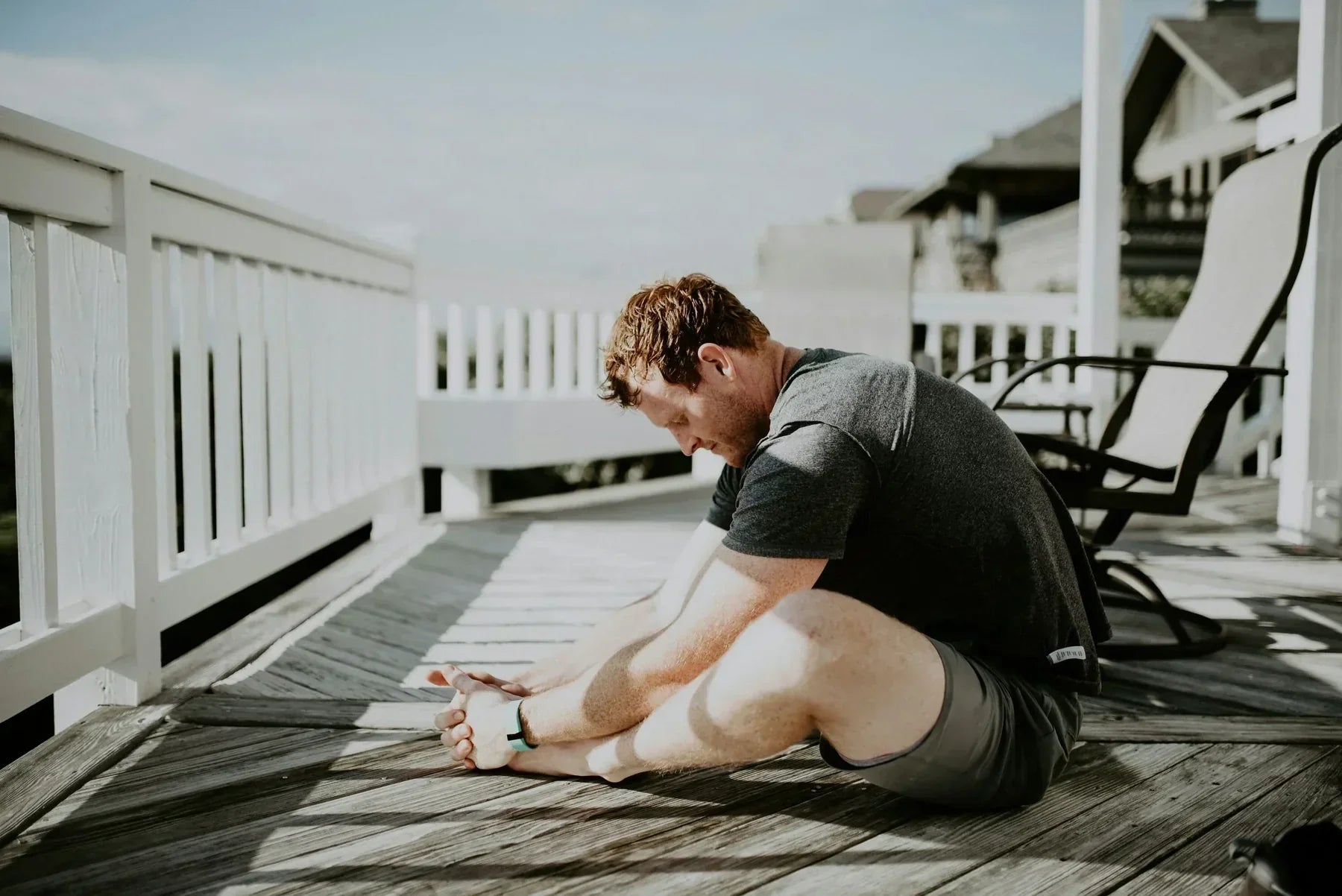No equipment? No problem. You don’t need expensive bands and dumbbells—much less a gym membership—to gain a strong, sculpted back. A strong back improves posture and prevents back pain, and you can work your way to one right at home or in the office, no materials needed. Read on to discover our 12 favorite bodyweight exercises that target your back muscles.
Why Should I Do Bodyweight Exercises?
If you want to improve your posture, stave off back pain, and improve your overall physical performance, strengthening your back is important. You don’t need sophisticated accessories and equipment to do so. With just a few, well-designed exercises, you can increase your back strength using nothing but the weight of your own body.
The Benefits of Bodyweight Exercises
Strengthening your back with bodyweight exercises offers several advantages that using heavy equipment doesn’t.
First, training with bodyweight improves your body awareness. You have to use different parts of your body simultaneously, which promotes better physical control and coordination.
Moreover, not using material reduces the risk of injuring yourself from incorrectly using weights or using weights that are too heavy for you.
Finally, it means you can exercise anywhere, at any time. That ease and flexibility makes it easier to maintain a regular exercise routine.
The Anatomy of the Back
The back is made up of several muscle groups that allow for both movement and stability. The primary muscles are the trapezius, the latissimus dorsi, the rhomboids, and the erector spinae. Each of these regions plays a specific role in supporting the spinal column and facilitating the many complex movements of everday life.
- Trapezius: This large, flat muscle begins at the base of the skull and ends in the middle of the back. It’s responsible for supporting the neck and shoulders and raising the arms.
- Latissimus Dorsi: The latissimus dorsi, usually referred to as the lats, are one of the largest muscles of the back. It stretches from the thoracic vertebrae to the arm muscles. It’s crucial for rotation and for pulling the arms downward.
- Rhomboids: Located between the shoulder blades and the spine, these muscles help pull the shoulder blades backward—essential for both posture and back stability.
- Erector Spinae: This muscle group runs the length of the spine, from the lower back to the neck. They’re essential for back flexion and extension and for holding you upright.
12 Bodyweight Exercises for a Stronger Back
Here are 12 great exercises for strengthening your back, no equipment required:
Superman
Lie face down, hold your arms out in front of you, and raise your legs and arms simultaneously. Hold this position for a few seconds before releasing.
- Instructions: Lie on your stomach with your arms stretched out in front of you. Engage your back muscles as you lift your arms and legs at the same time, keeping your head aligned with your spinal column. Try to raise your arms and legs as high you can without discomfort.
- Repetitions: Do 3 sets of 12 to 15 reps, resting for 30 seconds between sets.
Glute Bridge
Lie on your back with your knees bent. Lift your pelvis toward the ceiling as you squeeze your glutes and abdominals. Hold for a few seconds before releasing.
- Instructions: Lie on your back with your arms beside your body. Your knees should be bent, with your feet flat on the floor. Push your hips upward as you contract your glutes and abs. Hold this position for 5 to 10 seconds before slowly returning your hips to the ground.
- Repetitions: Do 3 sets of 12 to 15 reps, resting for 30 seconds between sets.
Classic Plank
Support your body on your forearms and toes while in a push-up position. Your body should be aligned from head to toe. Hold for 30 seconds to one minute.
- Instructions: Get into a push-up position, but with your forearms on the ground. Hold your body parallel to the ground and contract your abs. Make sure that your back is straight—neither sinking nor too arched.
- Repetitions: Hold for 30 seconds to one minute, then rest for 30 seconds before repeating for a total of 3 sets.
Side Plank
Lie on one side, supporting yourself on one forearm. Raise your hips so that your body forms a straight line from your head to your feet. Hold for a few seconds, then repeat the same movement on the other side.
- Instructions: Lie on one side, supporting yourself on one forearm with one foot stacked on top of the other. Raise your hips so that your body forms a straight line from your head to your feet, balancing yourself on one arm. Make sure that your body remains straight; do not arch your back or sink downward.
- Repetitions: Hold for 30 seconds to one minute, then rest for 30 seconds before repeating for a total of 3 sets.

Bird-Dog
While on all fours, raise one arm out in front of you at the same time as you lift the opposite leg. Switch sides while maintaining your balance.
- Instructions: Get on all fours, with your hands aligned with your shoulders and your knees aligned with your hips. Stretch one arm out in from of you while you stretch the opposite leg out behind you. Hold this position for several seconds before returning to your original position. Switch sides, doing the same movement with your other leg and arm.
- Repetitions: Do 3 sets of 12 to 15 reps, resting for 30 seconds between sets.
Arm and Leg Extension
While on all fours, raise one arm to shoulder height in front of you while keeping the other hand on the ground. Alternate. Repeat with your legs.
- Instructions: Get on all fours. Raise one arm while keeping the other on the ground. Hold this position for several seconds before returning to your original position. Switch sides, doing the same with the other arm. Finally, perform the same movement with each leg.
- Repetitions: Do 3 sets of 12 to 15 reps, resting for 30 seconds between sets.
Classic Push-Up
This well-known exercise works not only the back but also many other muscle groups. To maximize its benefits, take care to use proper form.

- Instructions: Get in plank position, with your palms on the ground at slightly wider than shoulder width. Lower your body by bending your shoulders until your arms are parallel with the ground. Push yourself back up to your initial position.
- Repetitions: Do 3 sets of 12 to 15 reps, resting for 30 seconds between sets.
Incline Push-Ups
Place your hands on an elevated surface, like a table or a bench, and then perform a push-up. This position helps lessen the exercise’s resistance while still working the back.
- Instructions: Get in plank position, but with the palms of your hands on an elevated surface. Perform a push-up, making sure that your body remains aligned as you lift and descend. You can adjust the height of the support surface to increase or decrease this exercise’s intensity.
- Repetitions: Do 3 sets of 12 to 15 reps, resting for 30 seconds between sets.
Reverse Snow Angels
Lie on your stomach with your arms outstretched. Imitate the movement of a snow angel, keeping your arms and legs slightly elevated. This exercise improves shoulder mobility in addition to strengthening the back muscles.
- Instructions: Lie on your stomach with your arms outstretched in front of your head. Raise your arms and legs off of the ground with your palms turned downward. Make circular movements with your arms, as if you were creating a snow angel on your stomach.
- Repetitions: Do 3 sets of 12 to 15 reps, resting for 30 seconds between sets.
Inverted Row
Lie underneath a table or bar. Grasp it with your hands and pull your chest towards it, engaging your back muscles.
- Instructions: Lie on your back beneath an elevated surface. Grasp it with your hands, keeping your palms turned toward you. Contract your back muscles and raise your chest towards the bar, pulling yourself upward.
- Repetitions: Do 3 sets of 12 to 15 reps, resting for 30 seconds between sets.
Straight-Armed Squat
This twist on the classic squat, performed with your arms held straight out in front of you, provides greater stability and back support.

- Instructions: Stand with your legs slightly further than shoulder-width apart. Raise your arms straight out in front of you, parallel to the ground. Do a squat, bending your knees and lowering your body towards the ground. Keep your arms straight throughout.
- Repetitions: Do 3 sets of 12 to 15 reps, resting for 30 seconds between sets.
Simulated Swimming
Do swimming motions while lying on your back—working your back muscles as you alternate your arms and legs.
- Instructions: Lie on your back and stretch out your arms and legs. Keeping your head and back lifted slightly off of the ground, do swimming motions, alternating the movements of your limbs.
- Repetitions: Do 3 sets of 12 to 15 reps, resting for 30 seconds between sets.
By doing these bodyweight exercises a few times each week, you’ll strengthen your back and improve your posture in no time!











